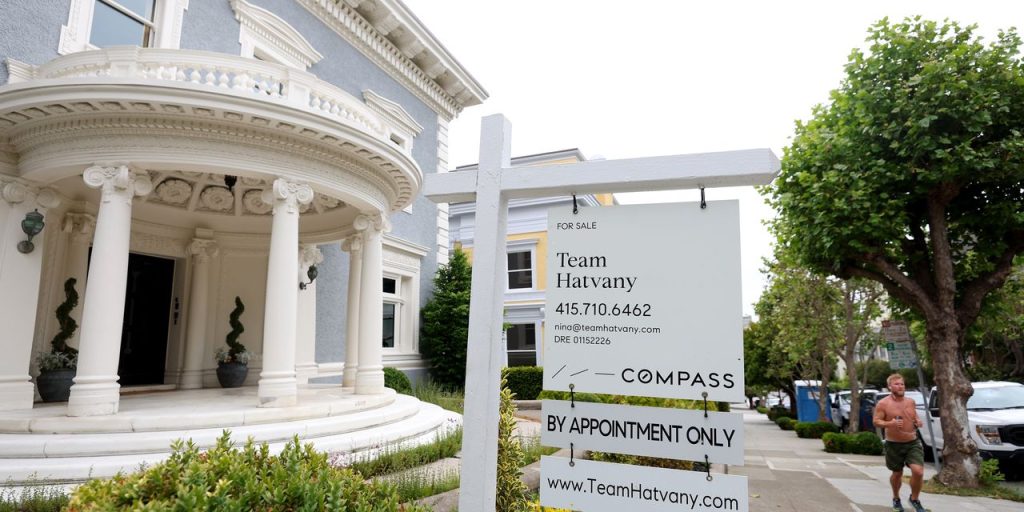The numbers: U.S. mortgage rates rose for the seventh week in a row, with the 30-year mortgage rate inching even closer to 8%.
A jump in rates by 20 basis points caused mortgage demand to fall to the lowest level since 1995.
More home buyers are turning to adjustable-rate mortgages, or ARMs, with demand rising to the highest share of overall mortgages since November 2022.
The rise in rates dampened overall home-buying demand. The overall market composite index — a measure of mortgage application volume — fell in the latest week, according to the Mortgage Bankers Association (MBA) said on Wednesday.
The market index fell 1% to 165.2 for the week ending October 20 from a week earlier. A year ago, the index stood at 201.2.
Key details: High rates are keeping a lid on home-buying and refinancing activity.
Buyer demand has dried up due to rates rising to the highest level in 23 years. The purchase index — which measures mortgage applications for the purchase of a home — fell 2.2% from last week.
Refinancing activity rose slightly despite high rates. The refinance index rose 1.8%.
The average contract rate for the 30-year mortgage for homes sold for $726,200 or less was 7.9% for the week ending October 20. That’s up from 7.7% the week before, the MBA said.
The rate for jumbo loans, or the 30-year mortgage for homes sold for over $726,200, was 7.78%, up from 7.56% the previous week.
The average rate for a 30-year mortgage backed by the Federal Housing Administration rose to 7.52% from 7.36%.
The 15-year rose to 7.08% from 6.98% from the previous week.
The rate for adjustable-rate mortgages rose to 6.99% from last week’s 6.52%. ARMs now comprise 9.5% of all applications, which is the highest share since last November.
The big picture: As winter approaches, the U.S. housing market looks to remain frozen with a demand and supply imbalance.
As rates rise across the board, home buyers are pulling back as borrowing costs surge, dampening demand.
High rates also discourage homeowners from selling if they need to purchase another home with a high rate, hurting the supply of homes for sale.
The dynamic is likely to persist until either rates fall enough to prompt homeowners to sell, or until buyers and sellers accept higher rates as the new normal.
What the MBA said: ”Rates have now risen seven consecutive weeks at a cumulative amount of 69 basis points” Joel Kan, deputy chief economist and vice president at the MBA, said in a statement.
“These higher mortgage rates are keeping prospective homebuyers out of the market and continue to suppress refinance activity,” he added.
Market reaction: The yield on the 10-year Treasury note
BX:TMUBMUSD10Y
was over 4.8% in early morning trading Wednesday.
Read the full article here
